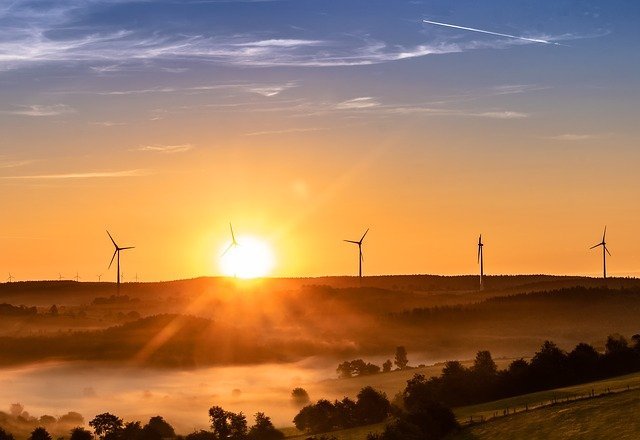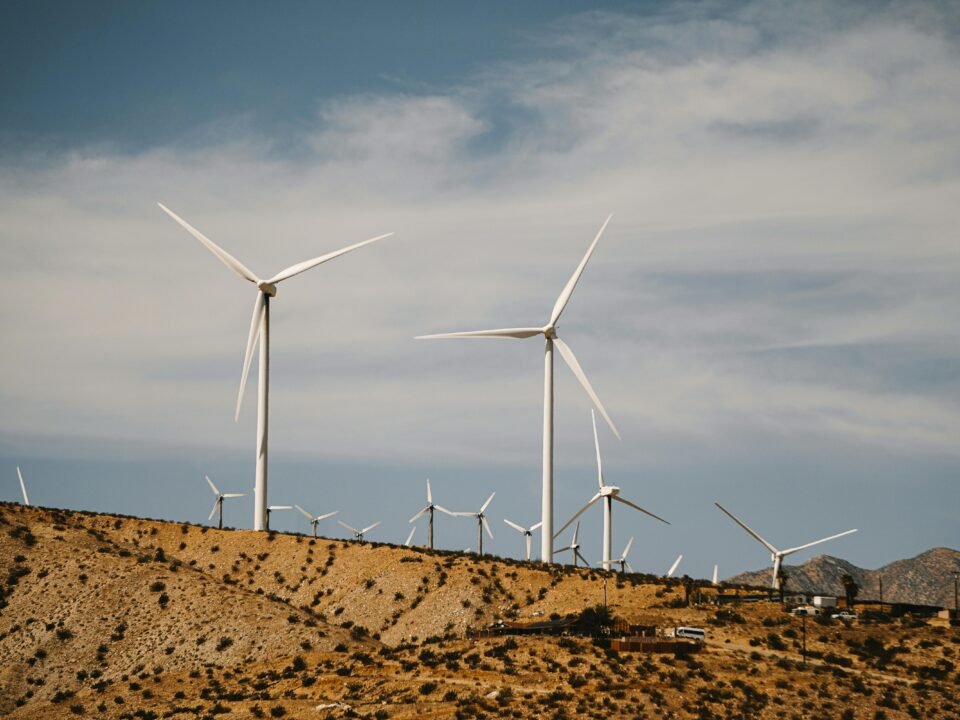- Wind
Wind farms capture the energy of wind flow by using turbines set on the ground and converting it into electricity. There are several forms of systems used to convert wind flow to the energy that can be used and each varies. Commercial grade wind-powered generating systems can power many different organizations or businesses, while single-wind turbines are used to help supplement pre-existing energy organizations. Another format to power organizations or businesses is utility-scale wind farms, which are purchased by contract or wholesale. Technically, wind energy is a form of solar energy as the process is more or less the same. The phenomenon we call “wind” is caused by the differences in some temperatures in the atmosphere combined with the rotation of Earth and the geography of the planet.
Benefits of Wind Energy
Wind energy is a very clean energy source, which means that it doesn’t pollute the air like other forms of energy. Wind energy doesn’t produce carbon dioxide or release any harmful gasses or products that can cause environmental degradation or negatively affect human health like smog, acid rain, or other heat-trapping gases. Investment in the source of wind energy technology can also open up new avenues for jobs and job training, as the turbines on farms need to be serviced and maintained to keep running. Take the next step by selecting the best green energy plan for your home!
Current Limitations of Wind Energy
Since wind farms tend to be built in rural or remote areas where land is available in abundance, they are usually far from bustling cities where the electricity is needed most. Wind energy must be transported via transition lines, leading to additions in higher costs. Although wind turbines produce little pollution, some cities oppose them since they dominate skylines way too much and generate noise. Wind turbines also threaten local wildlife like birds, which are sometimes killed by striking the wings or arms of the turbine while flying.
- Hydroelectric
Dams are what people most associate when it comes to hydroelectric power as it’s an energy
source generated by water sources. Water flows through the dam’s turbines to create electricity, known as pumped-storage hydropower. Run-of-river hydropower uses a channel to funnel water through instead of powering it through a dam.
Benefits Of Hydroelectric Energy Source
Hydroelectric power is super versatile and can be generated using both large-scale projects, like the Hoover Dam, and small-scale projects like underwater turbines and lower dams on small rivers and streams. Hydroelectric power does not generate air pollution, and therefore is a much more environmentally-friendly energy option for our environment.
Current Limitations of Hydroelectric Energy Source
Most of the firms in U.S. hydroelectricity facilities use more energy than they are able to produce for consumption. The storage systems of hydroelectric energy may need to use fossil fuel to pump water. Although hydroelectric power does not pollute the air, it disrupts waterways and sadly negatively affects the animals that live in them, changing water levels, currents, and migration paths for many fish and other freshwater ecosystems.




